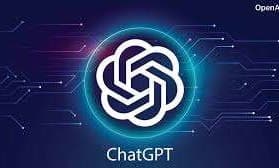

ChatGPT- The game changer
ChatGPT is an artificial intelligence (AI) chatbot developed by OpenAI and released in November 2022. It is built on top of OpenAI's GPT-3.5 and GPT-4 families of large language models (LLMs) and has been fine-tuned (an approach to transfer learning) using both supervised and reinforcement learning techniques.
ChatGPT launched as a prototype on November 30, 2022 and garnered attention for its detailed responses and articulate answers across many domains of knowledge. Its uneven factual accuracy, however, has been identified as a significant drawback. In 2023, following the release of ChatGPT, OpenAI's valuation was estimated at US$29 billion.

Features
Although the core function of a chatbot is to mimic a human conversationalist, ChatGPT is versatile. It can write and debug computer programs, mimic the style of celebrity CEOs and write business pitches, compose music, teleplays, fairy tales and student essays, answer test questions (sometimes, depending on the test, at a level above the average human test-taker), write poetry and song lyrics, emulate a Linux system; simulate entire chat rooms, play games like tic-tac-toe and simulate an ATM. ChatGPT's training data includes man pages and information about internet phenomena and programming languages such as bulletin board systems and the Python programming language.
What makes it unique?
 What makes ChatGPT stand out from other AIs?
What makes ChatGPT stand out from other AIs?
Human-like Text- With its Natural Language Processing program, ChatGPT can be used to produce text that appears human. When a user interacts with this AI, they wouldn’t know whether a human is behind that or an AI. Interactive Responses- Because it works on Reinforcement Learning with the Human Feedback model, it can generate responses interactively. This feature makes it inherently unique as it will constantly evolve and adapt as per the feedback provided and make it an application that will create long-lasting users. Translation of Texts- There are over 7000 languages in the world, and though English is the most widely used, this application can be used for translating texts. With the technology constantly evolving, ChatGPT can be used to translate text from one language to another, making it easier for its users. Summarisation- People are really busy these days and don’t have time to read 10 pages long reports; thus, it can be used for summarising long texts. This would simplify a person’s work and save time.
What is BARD?
Google Bard is also an AI-powered chatbot that simulates human conversations with natural language processing and machine learning by drawing responses from the internet and uses Google's Language Model for Dialogue Applications (LaMDA). Bard provides more detailed answers to questions asked than the typical Google search through this large language model. The lighter and second version of LaMDA uses less computing power, so it can scale for more people to use and provide feedback.

Bard's main goal is to retrieve information in a simple answer versus a search engine results page, like digital assistants, such as Alexa and Siri, but with links for users to gather more information. Bard also works as a personal assistant and helps with tasks such as booking vacations, finding existing reservations and helping with meal planning. Bard uses more conversational or natural language queries for search rather than keywords used by search engines.
ChatGPT vs Google BARD

When OpenAI launched ChatGPT, people began looking for ways to use AI-generated content and AI technology for business, educational and personal purposes. However, AI experts warned that the information can mix up content when pulled from incorrect data sources. Generative content has its pros and cons.
Microsoft also recently announced a multiyear partnership with OpenAI to increase AI capabilities.
Alphabet, Google's parent company, announced Google's answer to ChatGPT -- a conversational AI chatbot named Bard. As of this writing, Bard has been released in phases to users on its waitlist, and users can sign up for the waitlist to get access by using their Google account on Bard's homepage.
Conclusion
Bard and ChatGPT are two different language models that have unique characteristics and applications. While both are large language models designed to process natural language, they have significant differences in their training, capabilities, and intended use cases.
ChatGPT and Google Bard are both highly advanced natural language processing models that can generate human-like responses to queries, but they differ in terms of their training data, model architecture, output quality, accessibility, and applications. Developers and Researchers should consider these differences when choosing which model to use for their specific NLP tasks.